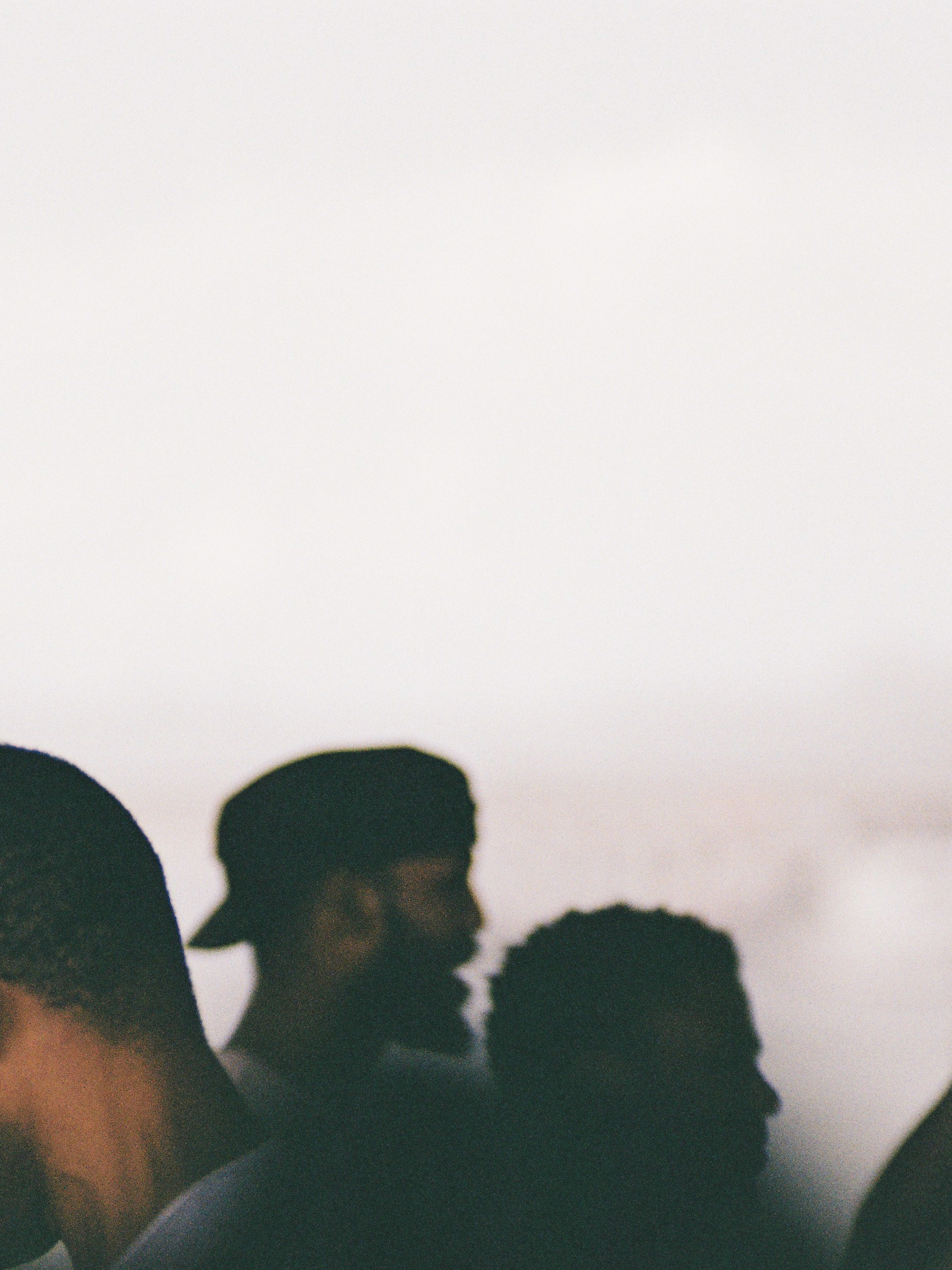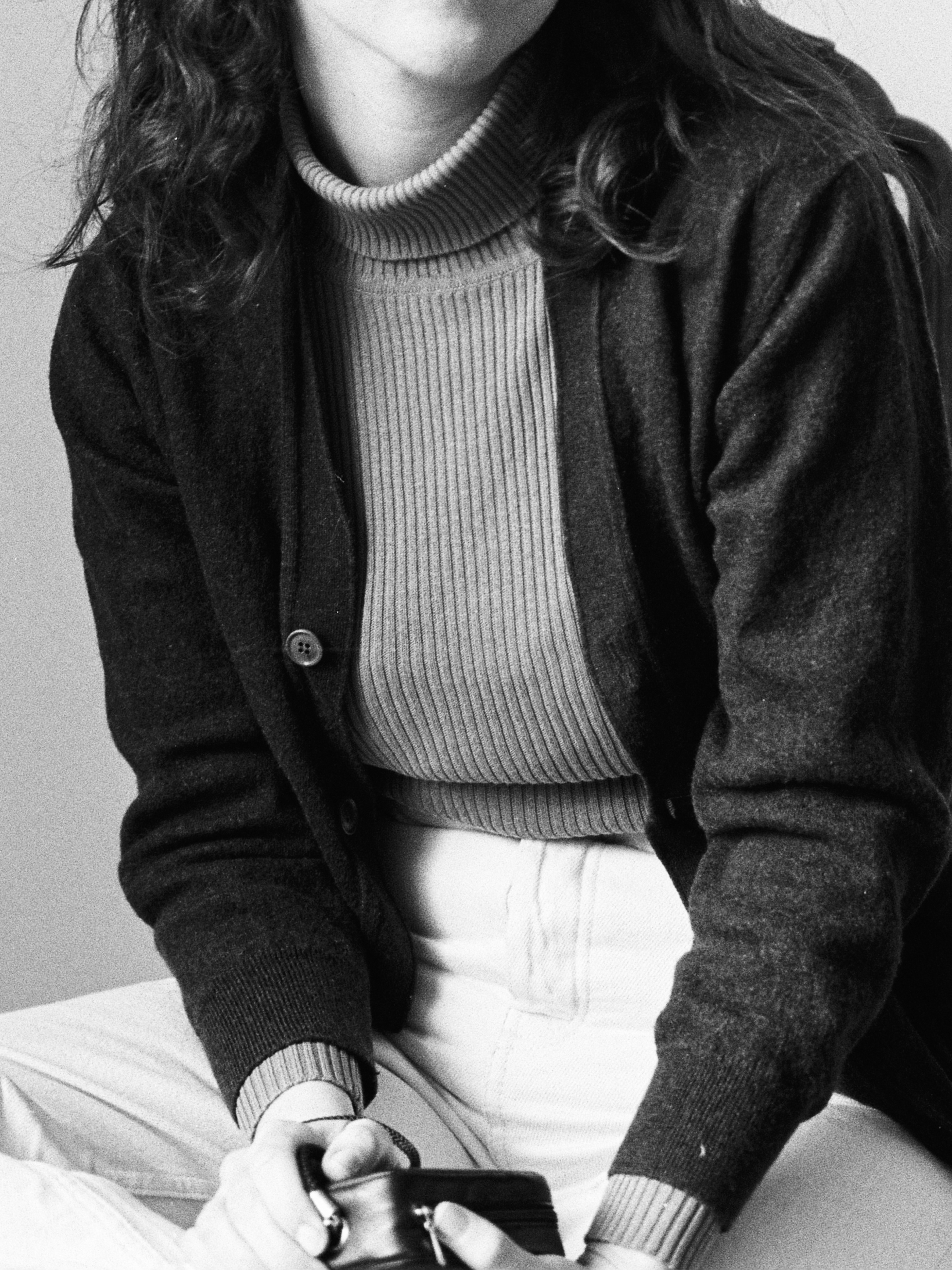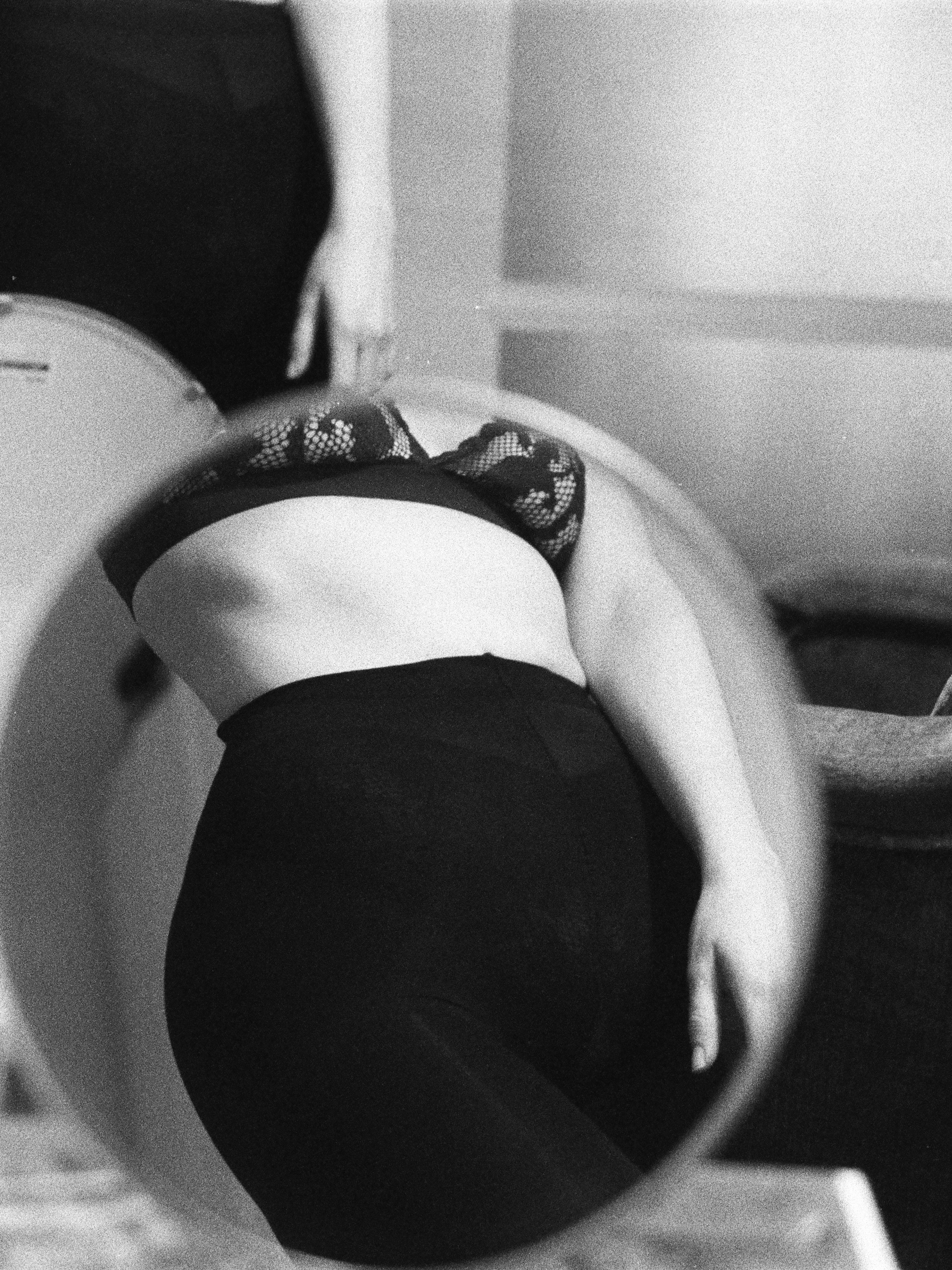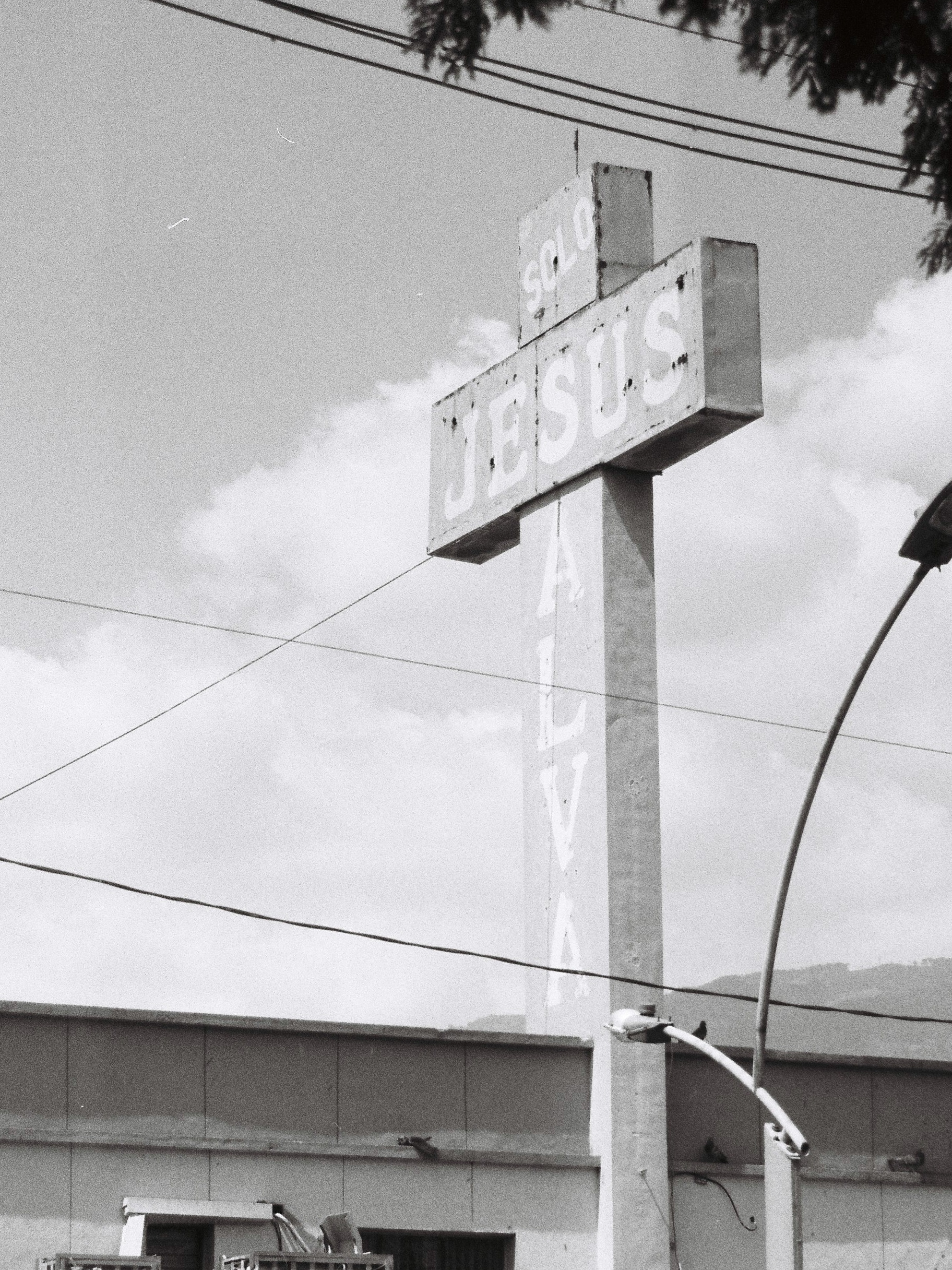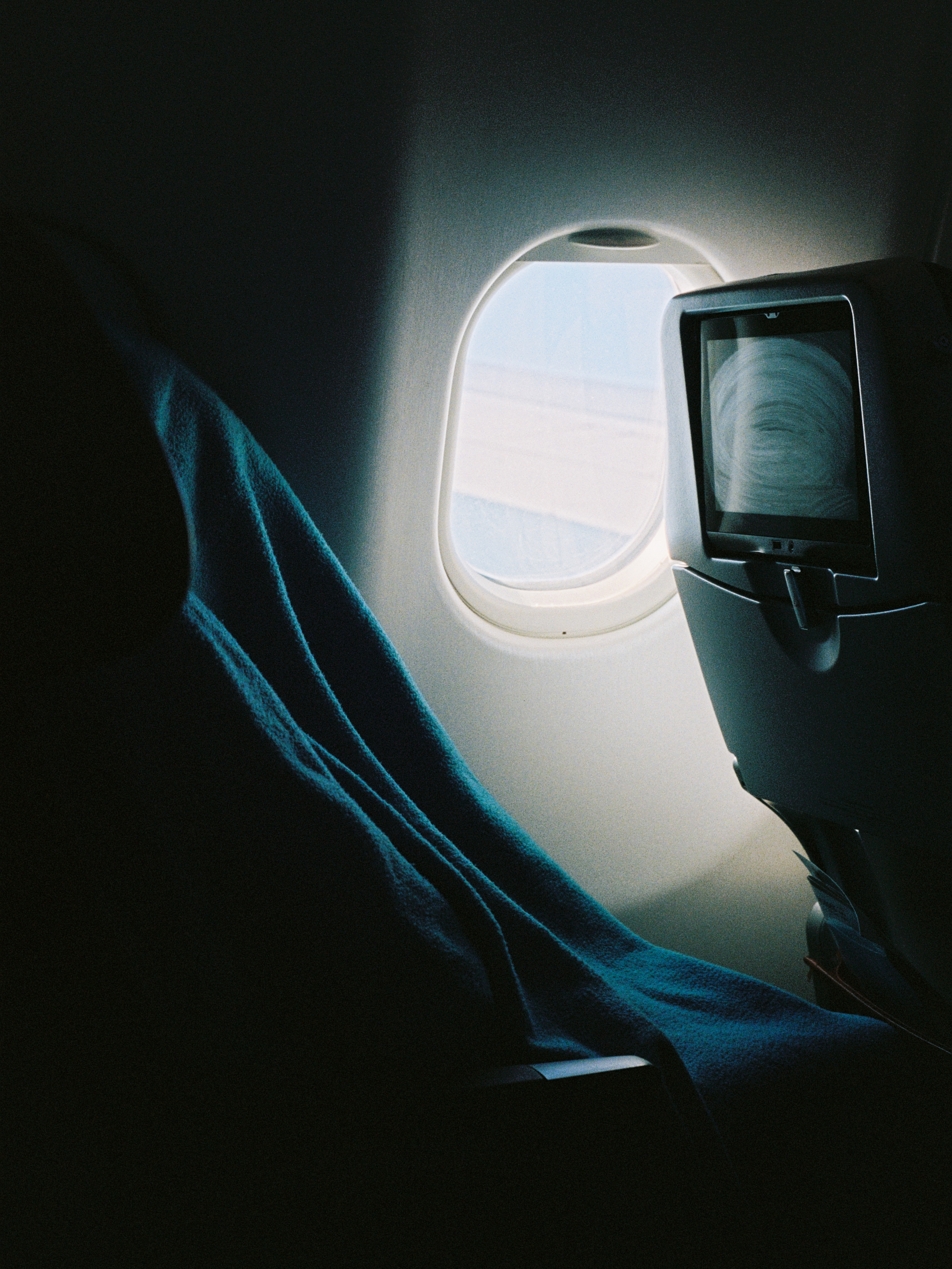For Hervé Guibert the phantom image comes when the camera fails, leaving the text to replace it. The photograph of his mother, for instance, he planned carefully- washing her hair, changing her hairstyle, her outfit- to let her escape from his father's gaze. The excitement while taking the picture, seeing it, foreseeing it, through the viewfinder, to finally discover that the film was badly loaded and no photosensitive surface captured the light’s rays carrying the image of his real mother. It is left therefore for the text to create, to recreate that image, and to say more than the photograph could have.
The last few days I have taken several pictures, all of them with my film camera, a Nikon FM, even though I have my phone and a digital mirrorless with me. It is the reflex which allows me, through the mirror, to see differently. The eye in the viewfinder, the reality carried by a proper mirror, the gesture of setting the aperture and the speed, the consistency of the dials, the responsiveness of the shutter, the deferred gratification of not seeing the image right away. In those gestures there is a way of thinking absent in my experience of the other image-capturing apparatuses.
While I write these lines, the images I have taken in the last few days are but potential images. The light has been, hopefully, captured, but something still might go wrong with them. My camera could be stolen in a café in Marseille. A leak of light after an accidental drop in the Calanques or a possible mistreatment from the lab technicians could wash out the latent images fixed in the chemical emulsion. At this moment, there is but the thinking those images have created, and therefore, this text, which is another type of image, a phantom one.
The photos I have taken in the last few days are about light, which is a subject that interests me deeply every time I come to the South of France. Its intensity, its capacity to create shadows. Caravaggio’s Narcissus, with only the adequate amount of light for the boy to see his reflection over the pond. The light coming from an assumed narrow crack illuminating Magdalena’s ecstasy in a cave of Aix-en-Provence. The camera allows me to think about the importance of the light, or to think about it in a different way. Maybe in connection with Colombia's light, which is also strong but interests me less. Why?
Photo 1
The dark box of a projector projects the artificial light of an experimental film. Ginza Strip. Strips of film of the artificial lights of Tokyo’s Ginza district, feet in movement embedded in strips of striped film. It is three in the afternoon and the sun makes its way to the room which, in other times, in other circumstances, would have been used as a dressing room for the open-air theater next to the chalky rocks of the Baude. A cave, cold and humid in mid-May where the projector projects the artificial light of a striped film. The arched ceiling, created by romans centuries ago and powerless in front of the water and the tectonic plate’s movements, revels a crack where an unnoticeable stalactite starts to form. The perpendicular light coming from a small window in the entrance magnifies the crack and restores its geological meaning. From the view finder, those formations along the crack look like the fault of San Andreas, or the Andes Mountains where I was born in the ephemeral light of dusk.
Photo 2
The morning light passes through the window in the ceiling and hits, in beams of light, the yellow curtains dividing the mezzanine from the room’s first floor. I am mesmerized by the lines in the linen, the changes in its surface, its forms, multiplied by the shadows and by the multiple shades of yellow the light creates in it. Man Ray’s photos of Lee Miller behind the curtain of his Parisian apartment come to mind. Hervé Guibert’s photos of Thierry Jouno veiled as a bride, and bathed by the Elbe Island Mediterranean light, flash. I change the lens from 50mm to 28mm. The distance, the now curved space, magnifies the feeling of being in front of an unattainable territory. A desert. There is also a feeling of impropriety. As if the absence, the fabric by its own, would be sinful. A picture of absence.
Photo 3
There is no way to capture it, and yet I try. A crescent moon, the outline of a church. How powerful is light when there is no light around. The next day I enter. Now it is the sun which enters through stained glass illuminating a painting of Magdalena’s conversion. It is in the black box of churches or thick dark forest, where light can be seen. Where rays are visible in the air. And yet, they are impossible to capture.
The house of Bernarda Alba. In the house of my great grandparents with almost no windows, the sun forbidden. A sun which burns lizards alive and turns dust into moon dust. A black box in which I remember the sun rays, the smell of cockroaches and old urine, the fan blades as background to news of terror. Time expands as the tissue of the blue swimsuit wore in the Magdalena River. Red skin, lotion and the smell of smoke. Gossip, el rosario in women's hands, incense and palo santo. I do not understand yet. Going back home, in the back seat, I try to see the sun through shades. It feels like a duty, as if the more I do the better I will become at it. I close my eyes. I see light inside.
A year ago, not far from that church, I took the last picture in the light. It was fresh inside and the stained glass made the light so yellow, so visible, that it really looked like an almighty light was bathing her. There was no absence, and yet there was the premonition of one.
Now I retake that picture. Same camera, same lens. Different church, but that will make it. The rays come down and there is nothing. But the absence.
Afterpicture (gótico tropical)
Photo 4
Down the mountains, but still among them, a lit humidity caves in. In fire, a hundred green tonalities shine. The smoky mist rises like ants mounting up knitting a moving tissue, covering a mighty face. I haven’t seen it in a long time. That light, the same in August as in December. So strong and dirty. Clouds as thick as concrete beds shaping it. The Andes are the ribs of a sleeping animal. Silently, they harvest the possibility of death. I ask my father to stop the car. Should I go even further? I cross the road and jump the barbwires to take a picture. The valley has been recently ploughed to sow cotton and rice. It smells of burned diesel, fresh mud and rotten fruit. It is only between five and six when magic happens. When light is bearable, red and orange, when it is finally possible to see. I’m conscious of the act’s futility, and yet I shoot like praying.
Photo 5
Nearby a group of farmers bike alongside the road. Too late to be captured, but I see them as if my eyes were the camera. Brown wrinkled faces, old bikes, bad posture. Like that they travel several kilometers a day. A National Geographic cliché. But it is the light, fire in their faces as the fire in the mountains around us, which calls my attention. It is the light of Apocalypse Now, engraved in the Eastman Kodak emulsion. Congo, Vietnam, Colombia. Latitude zero. The same light somehow, a matter of physics (and of a colonial past).
In the summit the air is lighter and rockstars died high. Con altura. There is less ozone, less oxygen, less atmosphere for the light to pass through. The intensity is higher and the colors brighter. When the sun is out, everything is overexposed, and when it sets, under. Expelled clouds from Monserrate and Guadalupe make faces lit like Virgil and Dante. Dusky, and yet crispy as the flames they see through the door to the underworld. A Caravaggio undertoned, intoxicated. There is a door, indeed, up in the Andes which is impossible to capture. No apparatus has been designed for the task yet. This impossibility, transformed into absence, haunts me still.
This time I see her bathed in the sun light passing through the stained-glass of La Candelaria (deserts are always where everything begins and ends). It is different now. The abyss between us is visible due to this light. If it is impossible to capture, there are words. But they are also part of the apparatus to be tuned.
So, there is absence.
Photo 6

